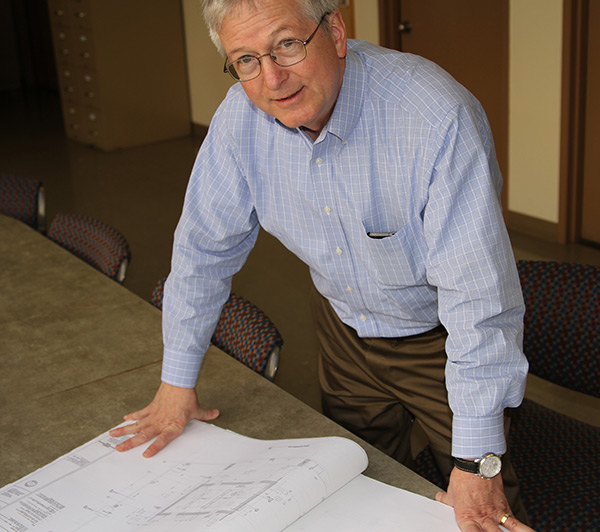Q+A on L.A. seismic study
Jack Moehle, professor of civil engineering at Berkeley since 1980, recently wrapped up a seven-year National Science Foundation survey of unreinforced concrete buildings in Los Angeles, which could be potentially vulnerable in severe earthquakes. Named to the National Academy of Engineering this year, Moehle talked to Berkeley Engineer about the seismic study and its impact.
 Jack Moehle (Photo by Daniel McGlynn)Berkeley Engineer: What was the purpose of this NSF study?
Jack Moehle (Photo by Daniel McGlynn)Berkeley Engineer: What was the purpose of this NSF study?
Moehle: There are approximately 22,000 older concrete buildings in California that do not meet the seismic standards of today. There’s not enough money to fix all of them. We wanted to find ways to pick out the killers from this lineup of older buildings. If you target the buildings most likely to be dangerous, it will become a manageable problem.
Why Los Angeles?
Los Angeles is in a highly active seismic zone with a sizeable population of concrete buildings built before 1976. The Southern California Earthquake Center there has conducted ground-motion studies, so we had a good idea of what the seismicity was, what some scenario earthquakes would look like, and how they might affect buildings there.
How was the study conducted?
We developed the inventory from existing public records, refined by using satellite imagery and field surveys. We conducted laboratory tests of typical building components and deployed findings in computer software for simulating how buildings react to earthquake shaking. By combining the inventory and simulation models, we were able to identify how many buildings may be at risk, as well as how selective seismic strengthening could reduce loss of life and property damage.
Why was it important to release the data to the city of L.A.?
All of us were interested in getting the data into the city’s hands, because what broader impact could there be than if Los Angeles starts a mitigation program to save thousands of lives?
The Los Angeles Times asked for the data last summer; why wait before releasing it?
The university has to protect the rights of its researchers to develop data, and to keep it private and confidential until the research is done. We were also concerned that people could misinterpret the data. This is not a list of buildings that are going to collapse, but rather a list of buildings that, as a class, have a higher risk than other buildings. We have not done any individual building studies.
What was the reaction when the L.A. Times ran a front-page story using study data?
I started getting calls from people worrying about whether the building they were living in was dangerous. My general advice was to gather information so that they could make informed decisions. What type of building construction is it? When was it built? Have there been engineering evaluations of seismic safety?
Is it unusual for an engineering study to be thrust into the public policy arena?
We’ve been interested for a long time in translating engineering metrics into public action, so this is not a totally unexpected result. I’m thrilled with what’s going on, because we might actually make a huge difference in seismic safety in California. The steps along the way may have been a little nerve-racking, but if our study creates the impetus for a city to take action, it will be a crowning achievement.
